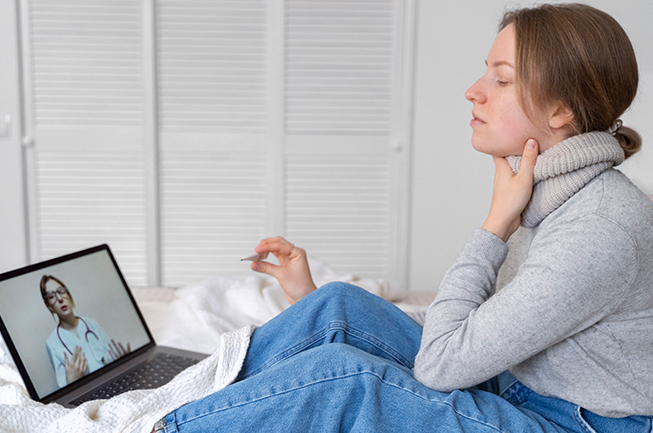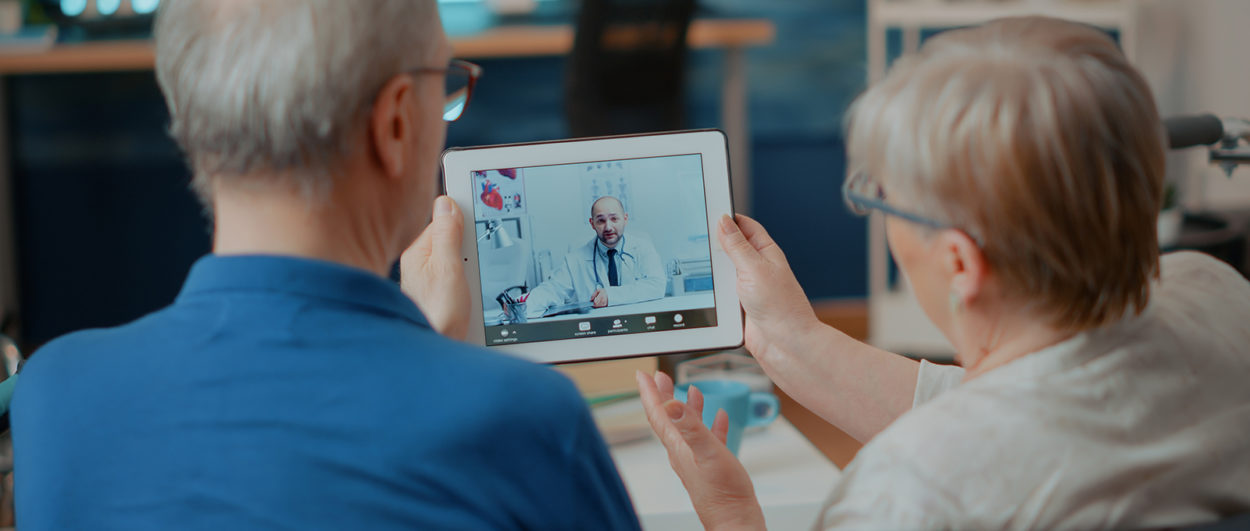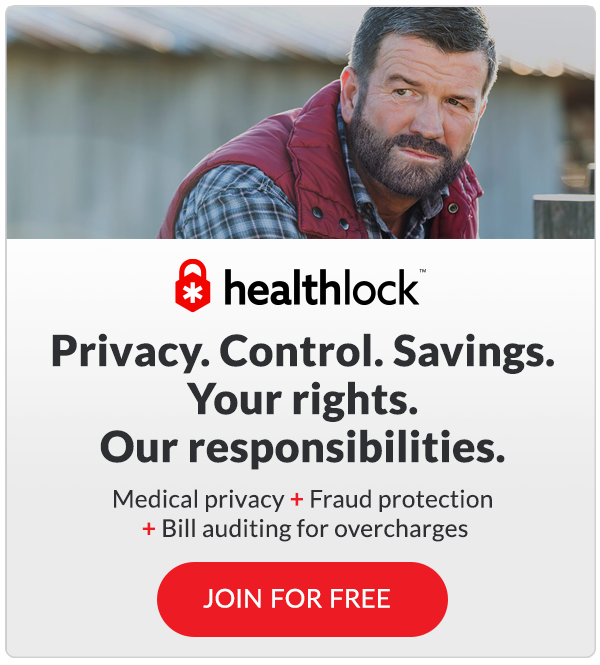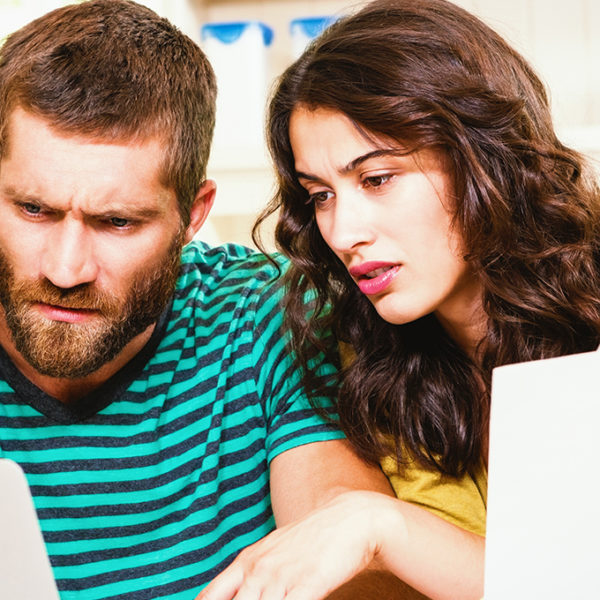There’s no question about it: since 2020, telehealth has surged in popularity, in large part due to the COVID-19 pandemic.
It’s been around in some capacity for decades—doctors used to monitor patients through correspondence, over radios, and in recent decades over the phone. But new video messaging technologies, coupled with increasing access to smartphones and sophisticated tablets and computers, opened up new doors for telehealth. Several apps were already partnering with doctors in the mid-2010s, allowing them to virtually visit with a patient and prescribe medication, if necessary.

Understandably, this existing technology was quickly put to work when even going to your doctor’s office became a dangerous proposition. In the first quarter of 2020, for example, telehealth visits jumped 50%! But is telehealth as secure as it should be? Are you risking your medical privacy for the sake of convenience?
The answer is yes, your medical privacy may indeed be at risk when you turn to telehealth. But that doesn’t mean you should ignore this very important development in healthcare—often, telemedicine is the safest way to see a doctor.
Let’s take a closer look at some of the risks and how you can protect yourself.
Not all video apps are completely secure
During the early weeks and months of the pandemic there was a mad dash to move as many patient services online as possible. Many patients turned to free video messaging apps to get in touch with their healthcare providers for much-needed services, not realizing that those apps might not be properly encrypted or secured.
Even more worryingly, a high percentage of healthcare professionals fall short on knowing what steps to take to make sure everything is properly secured. In short, many of the most popular, free, or inexpensive apps are easier to break into than a video app that meets HIPAA regulations.
Every device you use for a telehealth appointment is a potential “entry point” for hackers
Those who use video messaging apps with more advanced security features aren’t out of the woods, unfortunately. In our sprawling, highly connected healthcare infrastructure, every single device that logs into a network serves as an entry point to that network. If a patient is using their tablet and smartphone to talk to their doctor, that’s two entry points.
As we’ve noted before, medical devices make tempting targets for hackers who want access to, say, a hospital’s data servers. Unless you’re working at a healthcare facility yourself, the phone, tablet, or computer you’re using to communicate virtually with your doctor likely does not come with enough security to deter a sufficiently determined hacker, who can use your device as a portal into a network.
Telehealth may make it easier for someone to use your credentials
While telehealth has made it much easier to get access to healthcare without leaving your home or office, it’s also made life much easier for identity thieves. If someone has gotten their hands on your insurance information, they can use their smartphone to “be” you during a telehealth appointment, particularly if they bear a passing resemblance to you and both you and your physician are working from small, occasionally grainy screens.
Some apps may show your data to third parties

Some telehealth visits are connected through portals that may allow third parties like developers or employees to view your medical data as part of routine operations.
While the vast majority of people employed at those third parties are just doing their jobs and don’t want anything to do with your medical identity, that’s still complete strangers with access to your sensitive medical information. As you recall, medical identity thieves only need one or two pieces of information about you to successfully steal your medical identity. Once they have it, the impacts can be devastating to your finances and your health.
Secure your medical data for peace of mind
The problems we discussed above are just that: problems. The healthcare industry is aware of them, and HealthLock—along with many others—is pushing to close the security gaps and make telehealth safe for everyone.
As long as the pandemic continues to make things like visits to a doctor’s office difficult, telehealth will remain the go-to alternative. Until its security issues are resolved, you can turn to HealthLock to make sure your medical data remains private. We monitor every medical transaction tied to your health insurance; if we notice signs of fraud or medical identity theft, we can get to work before more damage is done.
If telehealth can make your medical needs easier, you should absolutely make use of it. Just make sure you’ve got your information locked down.

Sources:
https://www.rightpatient.com/blog/how-medical-identity-theft-occurs-during-telehealth-visits/
https://healthitsecurity.com/news/telehealth-is-the-new-normal-but-so-is-online-fraud
https://www.linkedin.com/pulse/curbing-healthcare-identity-theft-during-telehealth-gains-rashid
https://www.hhs.gov/sites/default/files/telehealth-faqs-508.pdf
https://www.gslab.com/blogs/role-of-identity-management-in-telemedicine
https://blog.dashlane.com/telehealth-platforms-privacy/
https://www.natlawreview.com/article/doj-s-national-rapid-response-task-force-strikes-again-new-wave-enforcement-actions
https://mhealthintelligence.com/news/the-history-of-remote-monitoring-telemedicine-technology
https://www.bridgepatientportal.com/blog/Is-Zoom-a-HIPAA-Compliant-Telehealth-Software/
https://www.beckershospitalreview.com/cybersecurity/6-vulnerability-points-hackers-target-in-hospital-cyberattacks.html
https://www.cnbc.com/2020/04/03/telehealth-visits-could-top-1-billion-in-2020-amid-the-coronavirus-crisis.html
https://www.singlecare.com/blog/news/telehealth-statistics/




